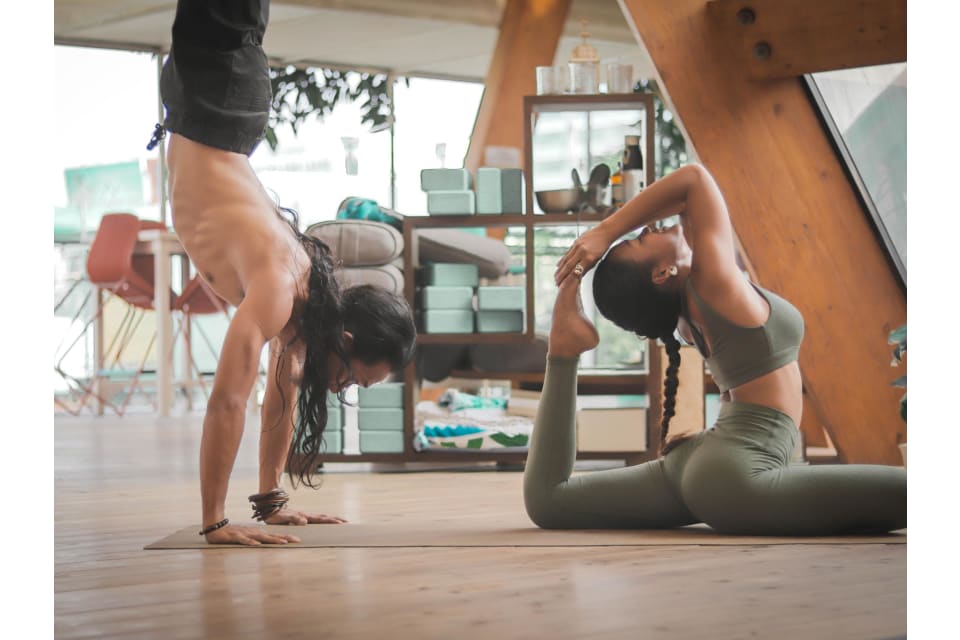A Yogic Recipe for Strengthening the Immune System

Yoga and its sister practice of Ayurveda are great options for strengthening the immune system in a natural and gentle way. When it comes to preventative methods, I like to do all I can-- so I asked some of our experts at MyYogaTeacher about some tips and tricks for keeping myself healthy. These tips, alongside washing my hands, social distancing, eating mindfully, and sleeping well, make me feel empowered when getting sick is the last thing I want.
Here’s what the Ayurvedic experts had to say:
“On an empty stomach one can either take a small slice of lime directly putting it into your mouth and chewing it along with the peel and spitting away the lime. Of course, wash the lime properly before doing this. If one cannot consume the lime directly, you can squeeze half lime into boiling water filled in a coffee glass of about 100 ml and drink the water. Lime is rich in Vitamin C, an immune-strengthening vitamin. And, it tastes delicious!”
“During the day, you can add about 1/4th teaspoon of turmeric, a small pinch of pepper powder and about 5 drops of liquid tulsi drops (available in all ayurvedic medical stores) to about 500 ml of water. Boil the mixture for 15 minutes, allow it to settle, and drink the tea. One may choose to add 1 cinnamon stick for flavor. The ingredients may help battle inflammation.”
“Every morning on an empty stomach, oil pull with coconut oil for five minutes. Coconut oil has some antimicrobial properties and can help kill unhealthy bacteria in the mouth. Think of it as mouthwash for those who don’t want to be overwhelmed with mint!”
“Try steam inhalation for clearing the sinuses! Be sure to use distilled water to prevent infection. This should feel great if you are starting to feel congested. Some like adding eucalyptus essential oil-- but be sure to see if you have a positive reaction to fragrance before attempting that option.”
Now, coming to yoga, one can practice:-
“Ujjayi Pranayama: with a straight spine, tuck your chin to your chest. Breathe in and out calmly, slowly lengthening your breath. This naturally lowers cortisol production, helping to fight stress. If you’d like to try holding your breath between inhales and exhales, this can help increase lung capacity. The combination of lowered stress and better respiratory function is great in fighting illness.”
“Yogic Breathing: throughout the day, check in on your breath. Utilizing the yogic three part breath, which we address here, take small breaks for relaxation and mindfulness. When we use deep breathing throughout the day, we exercise our lungs in ways they rarely experience.”
“Asanas like Bhujangasana, Dhanurasana, Arda Chakrasana and Ustrasana will increase the ability of the lungs by allowing the lungs to expand completely and contract totally.”
This has been exclusively written by the team of MY YOGA TEACHER. We as a team believe yoga to be a scientific form of practice than yoga being a mere asana practice. We would be delighted to offer more to all of you when you schedule your classes with us. Many of these practices will need an experienced teacher to guide you through to experience maximum effectiveness.
Online Yoga Classes – Live & Interactive
Get 2 free private yoga sessions and 2 weeks of unlimited group classes with authentic yoga teachers. No credit card required when you sign up today!
Share this post?
Interesting Articles
Yoga for Golfers: 9 Poses and Practices for Improved Flexibility and Performance
Golfing can be a physically and mentally demanding sport, but did you know that practicing yoga can help improve flexibility and performance on the go...
Continue ReadingYoga for Post-Traumatic Stress Disorder (PTSD)
Feelings of overwhelm, stress, depression, and intense anxiety are just a few of the common symptoms of Post Traumatic Stress Disorder (PTSD). Brought...
Continue ReadingYou’re Invited! MyYogaTeacher’s Free Yoga for Relaxation and Sleep Event
Are you ready to relax and sleep better? Announcing the three-day yoga event dedicated to just that from November 11-13!And we want to see you the...
Continue ReadingRecent Articles
Neck and Shoulder Yoga for Pain Relief : New 1-on-1 Series!
Announcing A New 1-on-1 Series! We’re offering a new series of 1-on-1 classes! Our Neck and Shoulder Yoga for Pain Relief is designed to hel...
Continue ReadingOur New And Improved Group Class Platform!
Here's a quick walkthrough of our new GC interfaceExciting news! Our platform got an upgrade!MyYogaTeacher is always evolvi...
Continue ReadingNew 1-on-1 Hip Opening Series: Unlock Freedom in Movement
The new transformative 1-on-1 Hip Opening Series, specially designed to release tension and boost strength and mobility in your hips, is the perfect w...
Continue Reading© Copyright 2020 MyYogaTeacher Inc

